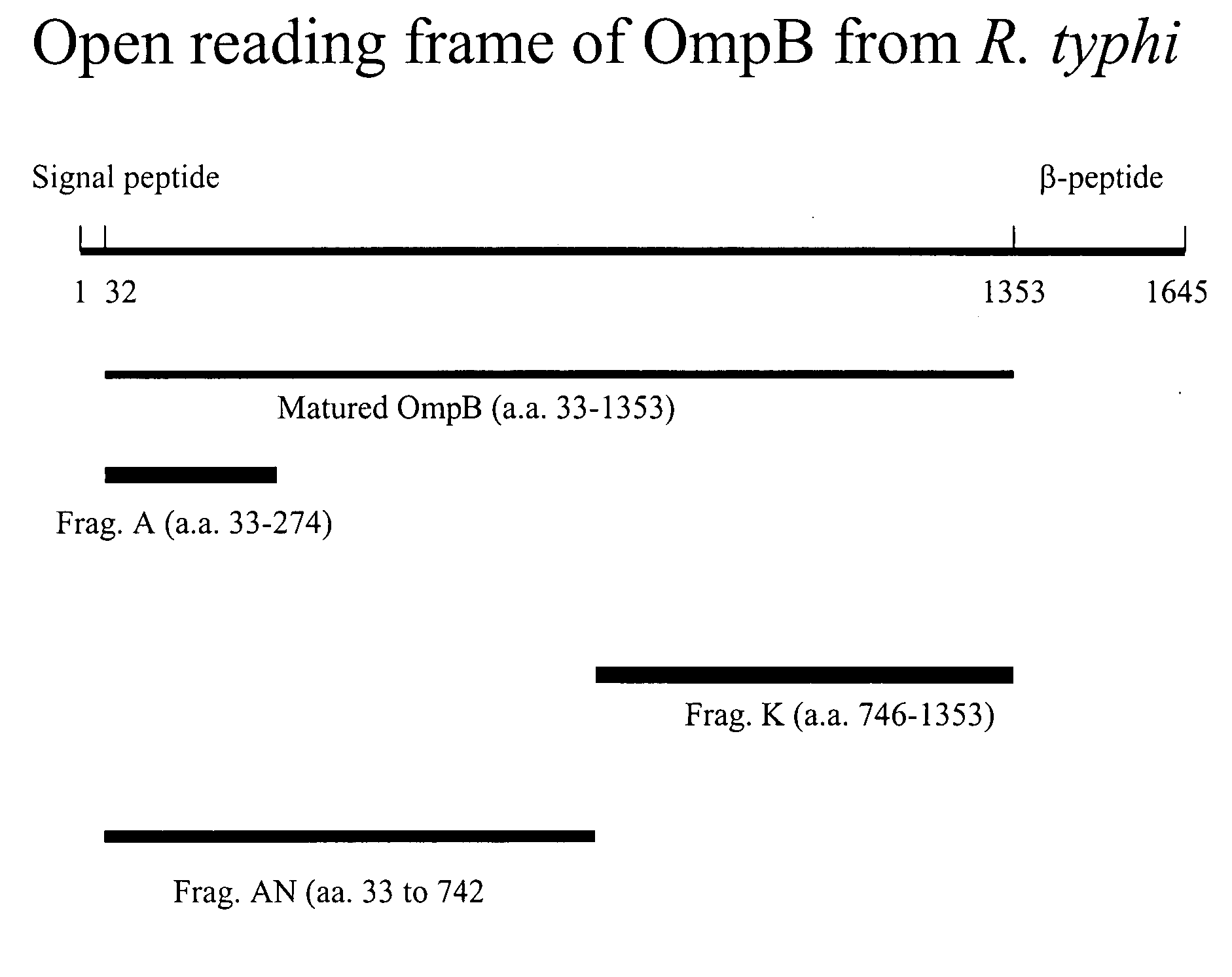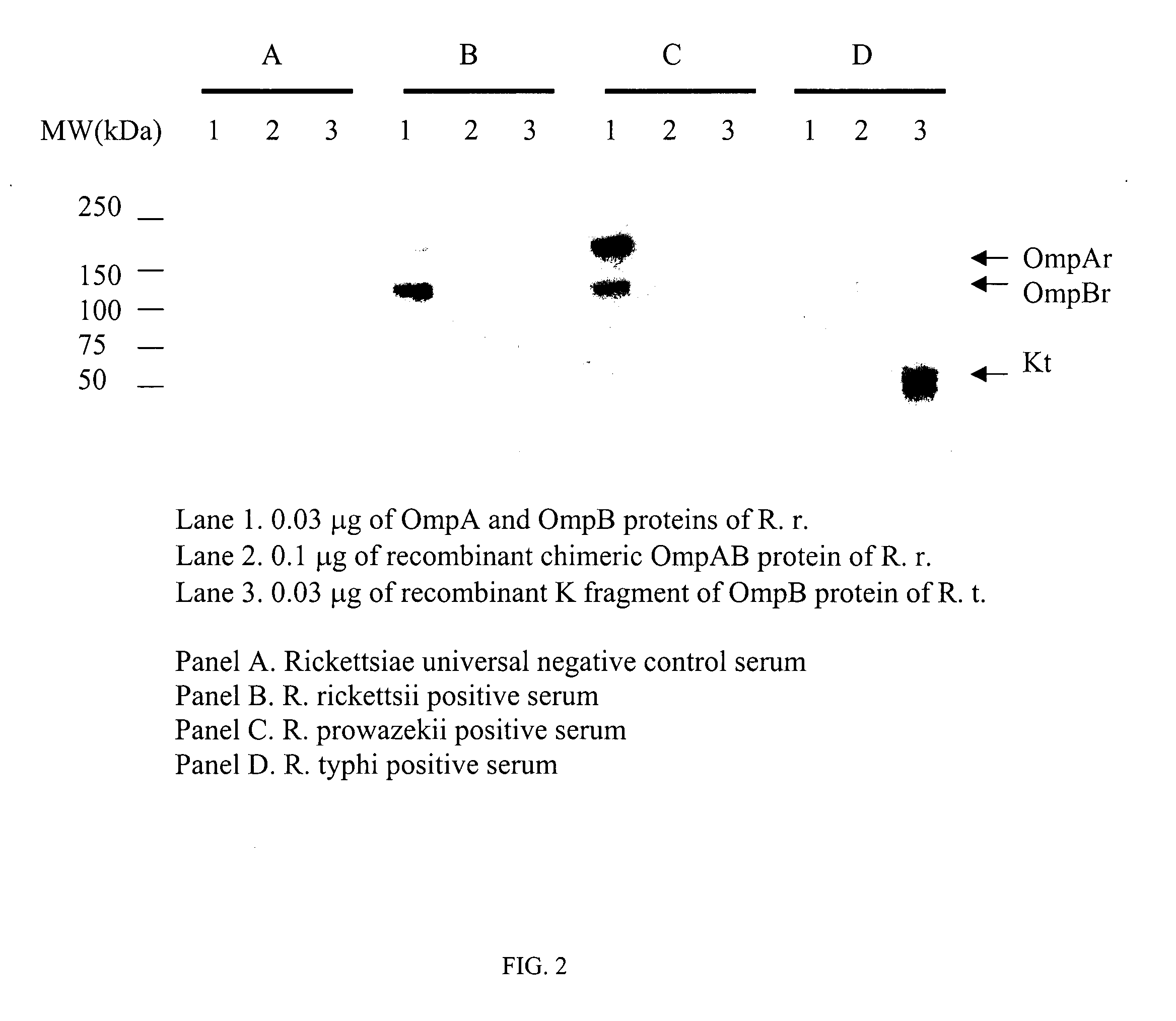Recombinant antigens for diagnosis and prevention of murine typhus
a technology of murine typhus and recombinant antigens, which is applied in the field of recombinant antigens for diagnosis and prevention of murine typhus, can solve the problems of misdiagnosis of murine typhus, determination and therefore somewhat subjective, and the incidence of murine typhus is probably grossly underestimated
- Summary
- Abstract
- Description
- Claims
- Application Information
AI Technical Summary
Problems solved by technology
Method used
Image
Examples
example 1
Use of OmpB Fragments A and K as Diagnositic Reagent
[0035] Assays using the recombinantly produced proteins include antibody-based assays such as enzyme-linked immunosorbent assays. As previously mentioned, antigen for the assay can be in the form of unpurified E. coli lysate. However, for increased assay sensitivity and reduced background, purified recombinant R. typhi proteins can be used and in methylated form. As an illustration, the following procedure is provided, comprising the following steps: [0036] 1. Recombinant proteins represented by SEQ ID No. 2, 4, 9 or 10 are immobilized, such as in 96-well plates. Alternatively, for increased sensitivity and specificity of the assay, both of the recombinant proteins represented by SEQ ID No. 2, 4, 9 or 10 can be included together or immobilized separately but used in the same assay; [0037] 2. Wash off unreacted / unbound antigen. A preferred embodiment of the inventive method is to wash at least 3 times with wash buffer containing 0....
example 2
Prophetic Use of Recombinant R. typhi Proteins as a Vaccine Component
[0044] The recombinantly produced polypeptides, because of their immunoreactivity to antibody in patient sera are excellent vaccine candidates. Accordingly, all or a fragment of the R. typhi proteins: Fragment A, Fragment K or Fragment AN (SEQ ID No. 2, 4, or 9 respectively), or their respective DNA sequences (SEQ ID No. 1, 3 and 12) incorporated into a suitable expression vector system, can be utilized as vaccine components. The method for induction of R. typhi immunity contains the following steps: [0045] a. administering an immunogenic composition containing the entire or immunogenic fragments of the recombinant polypeptides selected from the group consisting of SEQ ID No. 2, 4 or 9 in a unit dose range of 50 μg to 2 mg; [0046] b. administration of boosting dose of said immunogenic composition at least 1 week after priming dose with unit dose range of 50 μg to 2 mg in a buffered aqueous solution, wherein an imm...
PUM
| Property | Measurement | Unit |
|---|---|---|
| pH | aaaaa | aaaaa |
| pH | aaaaa | aaaaa |
| CT | aaaaa | aaaaa |
Abstract
Description
Claims
Application Information
 Login to view more
Login to view more - R&D Engineer
- R&D Manager
- IP Professional
- Industry Leading Data Capabilities
- Powerful AI technology
- Patent DNA Extraction
Browse by: Latest US Patents, China's latest patents, Technical Efficacy Thesaurus, Application Domain, Technology Topic.
© 2024 PatSnap. All rights reserved.Legal|Privacy policy|Modern Slavery Act Transparency Statement|Sitemap



